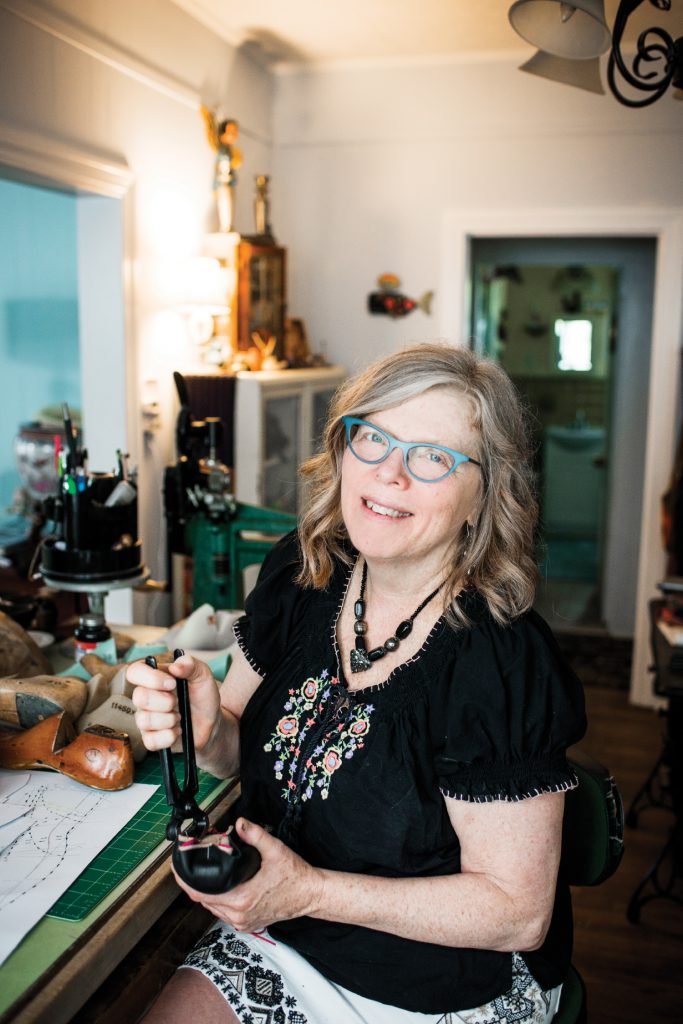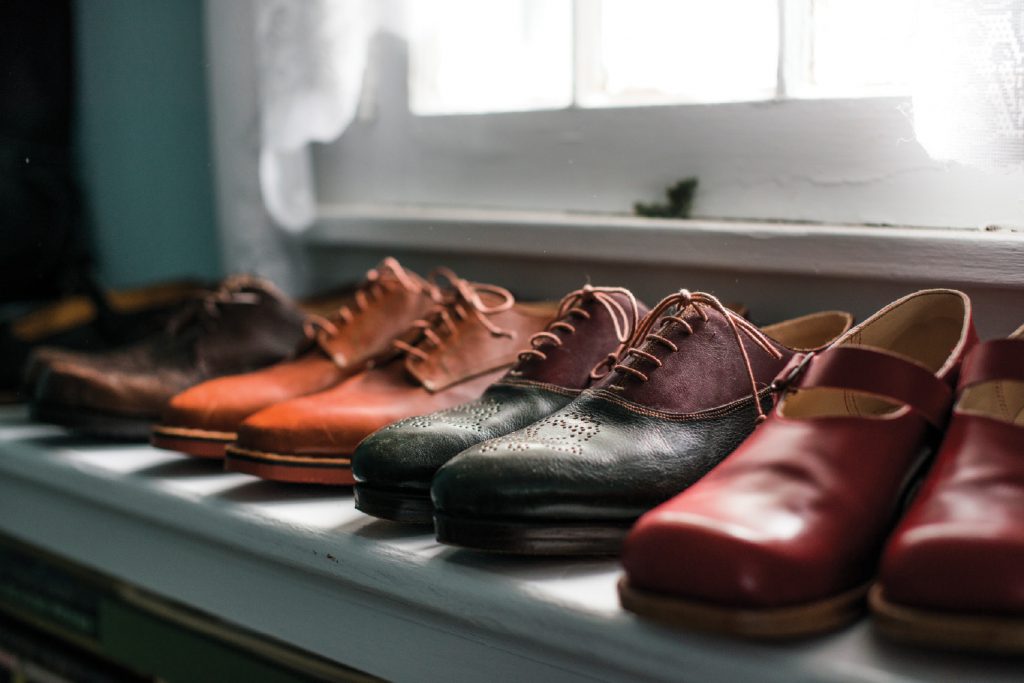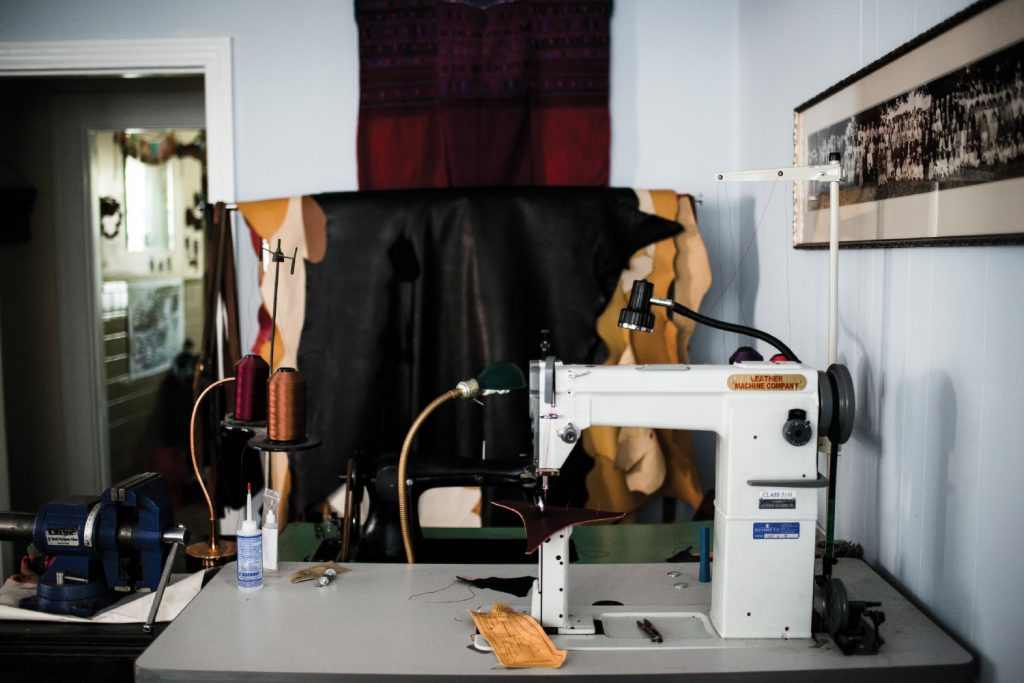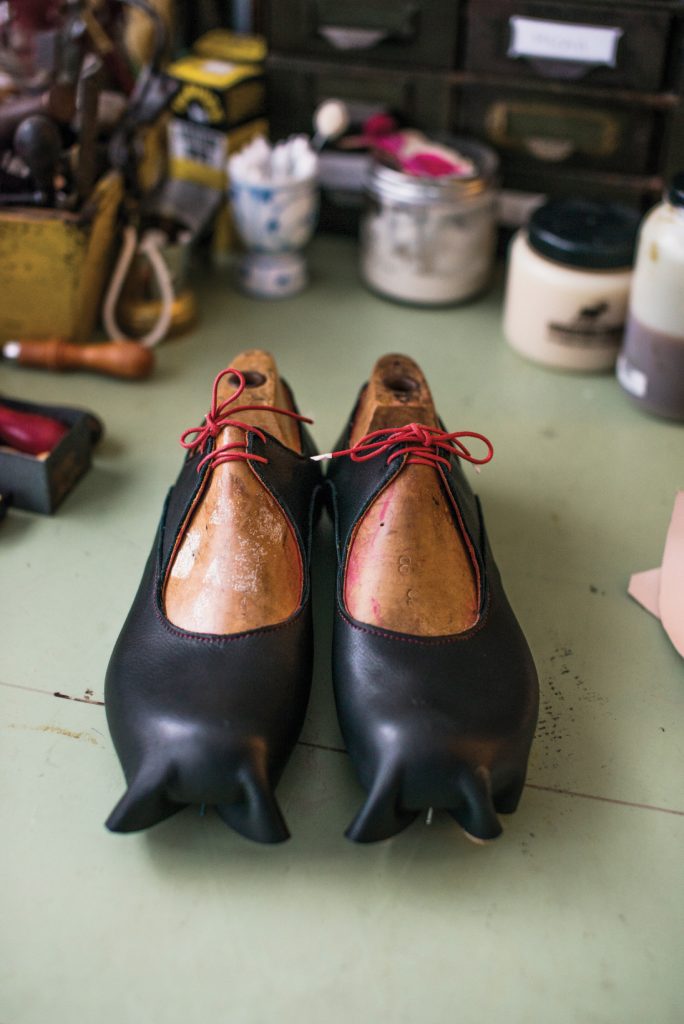
Photo by Karin Strickland
Deborah Robertson is a German folk dancer who used to perform at Oktoberfests throughout Texas Hill Country. In Asheville, she dances on Tuesday nights at Harvest House in Kenilworth. She says she first thought about making her own footwear when she went to buy a new pair of dance shoes and found they were composed largely of plastic.
“I just couldn’t believe this was what they wanted me to buy,” says Robertson. She remembers wondering where real dancers got their shoes.
Robertson found a shoemaking teacher soon after moving — in Asheville, she didn’t have to look far. She took all four 10-week classes offered by Jessica Brommer (Hope & Industry Handmade Shoes), and went on to attend last year’s 8-week Spring Concentration course at Penland School of Craft, led by Amara Hark-Weber.

Not long after, Robertson’s Balmoral button bootie got an official “shout out” — something like an honorable mention — from the judges at the Summer 2018 international Footwear Symposium, held in Savannah.
She focuses on dance and historical shoes, but Robertson also makes street styles, though all her pairs are historically informed, sleek-lined, and undeniably funky. Before she became a cordwainer, Robertson studied printmaking and etching, and she’s been a fiber artist and potter, too. She loves shoemaking, she says, because she gets to use so many of these skills. “The heel is really a sculpture. There’s engineering with the patterning,” she explains. “I get to use so many parts of my brain.” Most of her tools are antiques, and she says she scours the country to find them.

Photo by Karin Strickland
In her West Asheville bungalow, she cranks a strip of leather through the 5-in-1 machine she found in the Rio Grande Valley. Wooden lasts (shoe forms) lay in neat rows underneath her work space. The smell of new leather wafts from a large collection of hides draped in the corner
In the living room is what Robertson calls her altar to shoemaking. Her collection rests atop a packed bookshelf and just underneath a delicate lace curtain. She picks up the wine-colored Balmoral boots, studded with shiny rows of “Sam Brown knobs” (aka “Chicago screws”); several pairs of dance shoes; and her saloon-girl boots, which somehow look like a pair of bats about to take flight.

She wears all of them.
But building a pair of shoes for another person is a different experience. There’s no quick placing of an order based on style and size — it’s much more intimate. Clients are required to make a home visit, where Robertson kneels at their feet and works with a sharp pencil, measuring tape, and slips of cardboard as she traces the person’s feet and chats with them.

It’s almost like therapy. During the process, Robertson may learn as much about a buyer as she does about their feet.
And the labor that follows is very physical — from building up the lasts to create exact forms of a person’s foot, to the detail-oriented stitching and sculpting.
Each client gets a bespoke pair of shoes, built for each of their sometimes very different feet — works of art, expressions of identity, and workhorses all at once. “It’s a very personal business,” says Robertson.
Deborah Robertson, Deborah Shoemaker, West Asheville. For more information, see deborahshoemakershoes.com.
So proud of you, Deborah. And envious of your many skills. You rock, girl!
Nice effort…..it motivates me too….